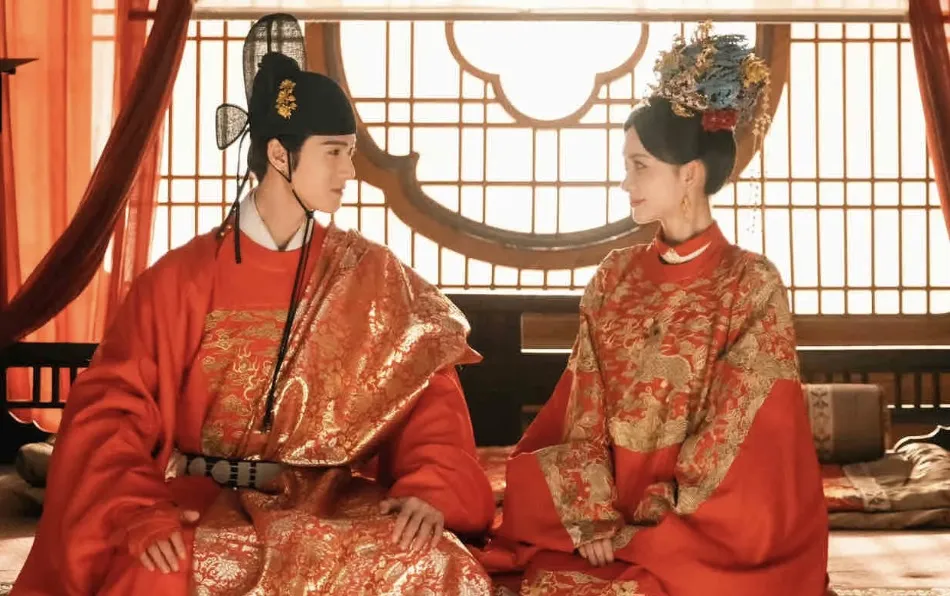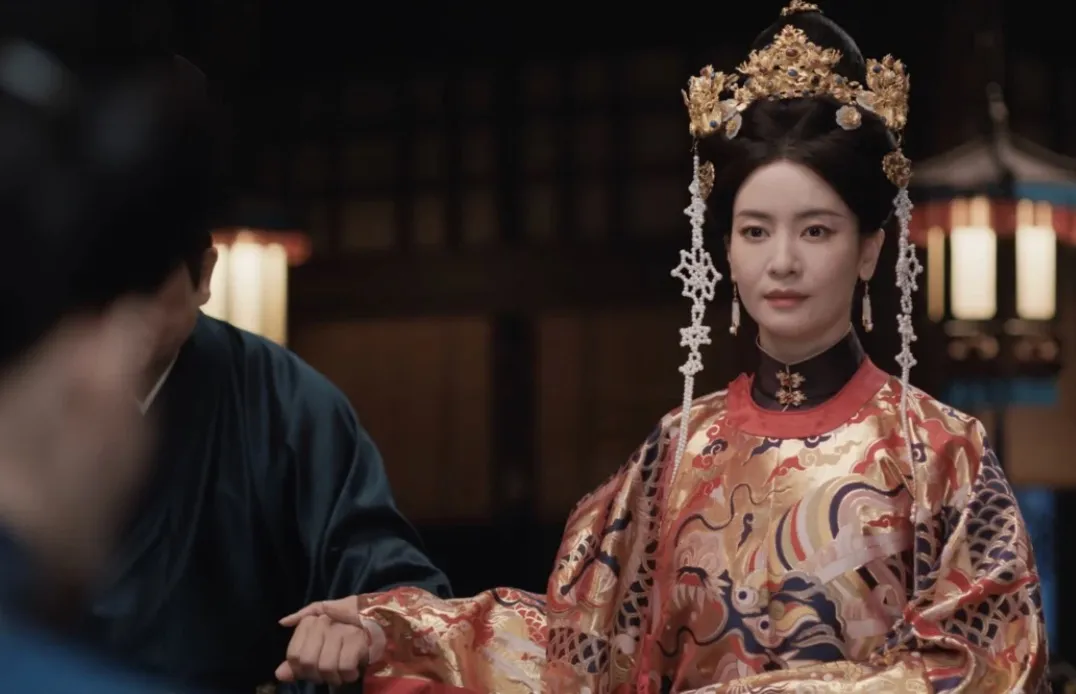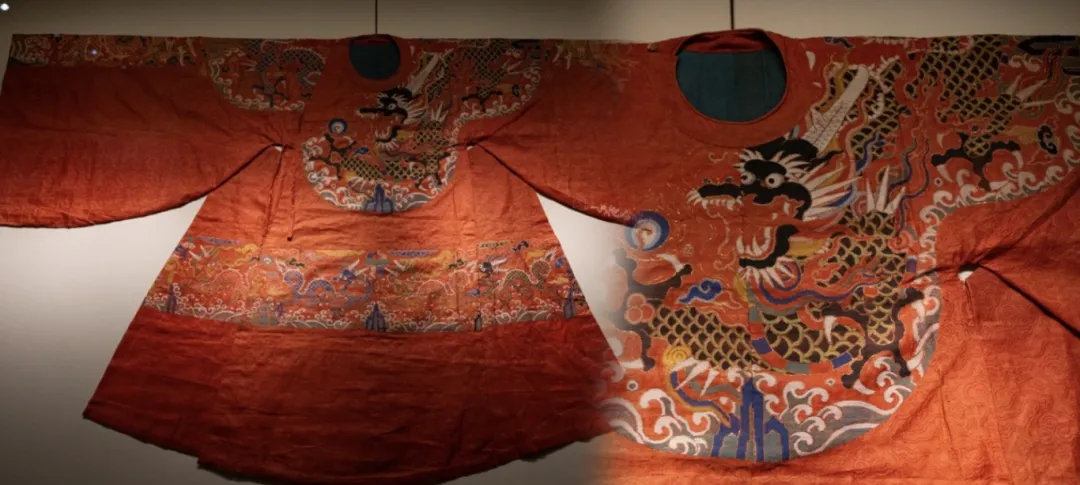In the ancient - costumed drama When the Wild Goose Returns, the entrance scene of Concubine Miao is truly impressive. That bright red robe and the hair ornaments... Isn't it like a flashback to the scene of Princess Yuan's return to her natal family in A Dream of Red Mansions? Of course, it's the elegance of our country! A similar scene was also seen when Meng Ziyi got married in Purple in the Ninth Heaven, just with different patterns (kirin patterns). Who says Ming - style clothing is only low - key and luxurious? The grandeur of Ming - style formal dresses can be highly praised.

First, let's conclude. What the imperial concubine wore was the "Python Robe" decorated with python patterns, a round - collared long gown style, with a standing - collared jacket inside, hairpins and hair ornaments on the head, and a horse - faced skirt below. This outfit is quite solemn and is a relatively high - level formal dress for noblewomen. No wonder some netizens said: This is not just an ordinary entrance of an imperial concubine. It seems like an "enthronement"!
The "Python Robe" can be worn by both men and women. As a lucky dress bestowed in the Ming Dynasty, it is equivalent to the first - rank official clothing. The red embroidered python robe with cloud shoulders, full - length sleeves, and knee - length panels in the Confucius Museum is the reference prototype for many modern python robes. It can be seen that the python, similar to the dragon but with four claws, has a very majestic image. This bright red round - collared robe style is often used as a representative of lucky dresses.
During the Hongwu period, officials of the Ministry of Rites proposed the theory of the Five Elements in clothing colors, believing that the Ming Dynasty belonged to the Fire Element and should advocate the color red. That's why red was emphasized for formal dresses on certain occasions in the Ming Dynasty. The details of Ming - Dynasty clothes can be seen from the craftsmanship on them. From a distance, you can only see the gorgeous colors, but on closer inspection, there are comprehensive manifestations of different craftsmanships. For example, "Zhuanghua" is a common decorative technique.
"Zhuanghua" is a term for a weaving technique, first seen in The Record of the Iceberg in Tianshui of the Ming Dynasty. Combined with different fabrics, there are "Zhuanghua satin", "Zhuanghua silk", "Zhuanghua gauze", etc. This process is completed during the weaving. Different - colored threads are used to weave partial patterns, so it is very difficult.
Of course, python robes are not only in red. For example, another python robe in the old collection of the Kong Family Mansion is a standing - collared, cross - collared style in a fragrant color; there is also a dark green one, as shown in the left - bottom picture, which is a traditional cross - collared style. Usually, a python robe is paired with a leather belt, and some python robes even have belt loops, similar to those on modern windbreakers. Among them, the jade belt is a symbol of status, and "Python Robe and Jade Belt" became a prominent outfit at that time. The number of jade belt plaques on the jade belt also shows the owner's status, usually around 20. In the early Ming Dynasty, the jade belt was actually tied around the waist, but after the mid - Ming Dynasty, it was more of a ceremonial and status symbol, with more and more complex decorations, often loosely tied, so the belt loops on the clothes appeared to prevent the heavy jade belt from slipping.
When wearing a python robe, men wear black gauze hats, and women wear pheasant - shaped crowns and hair ornaments. For women to wear a python robe, besides special merits, it also means she is an "imperial concubine" or a "Lady of the Order". A Lady of the Order usually refers to the official wife or mother of an official conferred by the emperor and needs to be bestowed with the dress to wear it. In some TV dramas, it is often seen that both side hair ornaments and hair ornaments appear in the wedding dress styling of ordinary people, which is incorrect. As shown in the picture above, different levels have different wearing rules. Generally, side hair ornaments can only be worn by the queen, usually paired with pheasant - shaped dresses or dragon - patterned robes.
In When the Wild Goose Returns, Concubine Miao did not wear a pheasant - shaped crown but wore pheasant - shaped hair ornaments. Also, for the sake of the TV effect, the sleeves of the python robe were adjusted to be wide - open large sleeves. But in cultural relics, most of these large - sleeve styles have cuffs or are like pipa - shaped sleeves. Of course, these are just details. Here, it's just for popular science. Overall, the flaws are outweighed by the merits. In recent years, domestic ancient - costumed dramas have gradually begun to respect clothing culture and spread the beauty of traditional clothing. Indeed, only our country can have such solemn and grand formal dresses!



